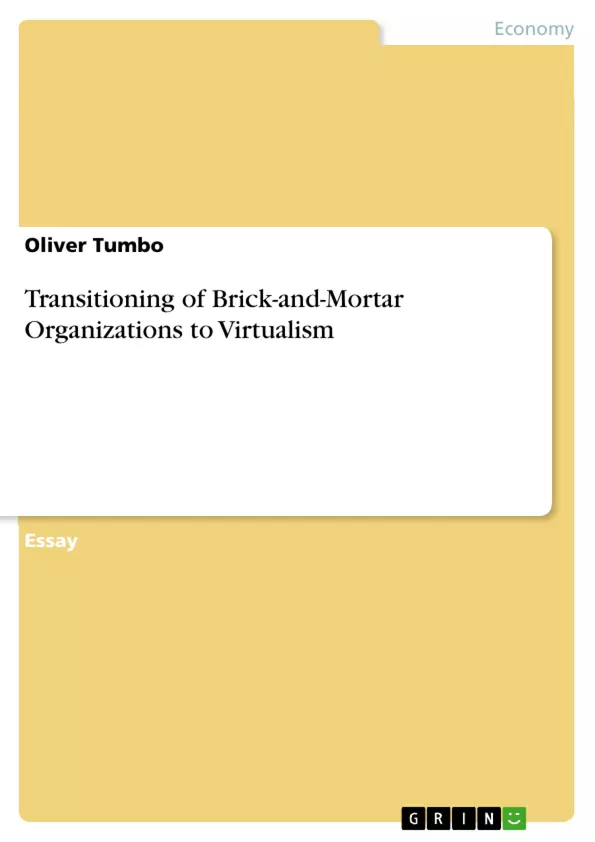In today's dynamic business environment, the swift adaptation to technological changes, particularly in e-commerce, has led to a profound transformation in the retail sector. This paper explores the phenomenon of brick-and-mortar organizations transitioning to virtualism, examining the challenges of security, competition, and return on investment (ROI) in this process.
The rise of virtual shopping platforms has shifted consumer behavior, prompting traditional retail businesses to consider transitioning to virtual organizations. However, challenges abound. Security concerns, including the risk of data breaches and fraud, pose significant deterrents. Managing competition with established e-commerce giants such as Amazon is another hurdle, as few businesses are willing to start anew against such formidable competitors. Additionally, uncertainties about ROI in the face of high running costs, especially in marketing, complicate the decision-making process.
This paper delves into strategies for a successful transition, emphasizing the need for robust approaches that leverage technology and align with consumer-centric methods. As the world embraces technology, businesses must evolve to meet changing consumer behaviors, navigating challenges to ensure a seamless shift to virtualism.
Inhaltsverzeichnis (Table of Contents)
- Transitioning of Brick-and-Mortar Organizations to Virtualism
Zielsetzung und Themenschwerpunkte (Objectives and Key Themes)
This paper examines the challenges faced by brick-and-mortar organizations in transitioning to a virtual environment. It analyzes the impact of e-commerce on the traditional retail landscape and explores the factors that influence the success of this transition.
- The Rise of E-commerce and its Impact on Brick-and-Mortar Businesses
- Security Concerns in E-commerce
- Competition from Established Online Players
- Return on Investment (ROI) Challenges
- Consumer Shopping Behavior and the Importance of Technology and Consumer-Centricity
Zusammenfassung der Kapitel (Chapter Summaries)
- The paper begins by outlining the growing trend of e-commerce and its impact on traditional brick-and-mortar organizations. It discusses how technological advancements have facilitated the rise of online shopping platforms, enabling consumers to purchase goods conveniently and from the comfort of their homes. This shift has led to the decline of physical retail spaces and prompted some brick-and-mortar businesses to explore transitioning to virtual organizations.
- The paper then delves into the challenges associated with this transition. Security concerns are highlighted as a major hurdle, particularly in relation to data breaches, fraud, and the impact on brand reputation. The paper further discusses the intense competition from established online giants, which presents a significant obstacle for brick-and-mortar businesses entering the virtual space. Finally, the paper explores the challenge of achieving a positive return on investment (ROI) due to high running costs associated with platform development, inventory, customer acquisition, and marketing.
Schlüsselwörter (Keywords)
This paper focuses on the transition of brick-and-mortar organizations to virtualism, exploring key challenges such as security, competition, and return on investment. It examines the impact of e-commerce, data breaches, online fraud, established e-commerce giants, and the importance of consumer-centricity in the online space.
- Citar trabajo
- Oliver Tumbo (Autor), 2020, Transitioning of Brick-and-Mortar Organizations to Virtualism, Múnich, GRIN Verlag, https://www.grin.com/document/966968



